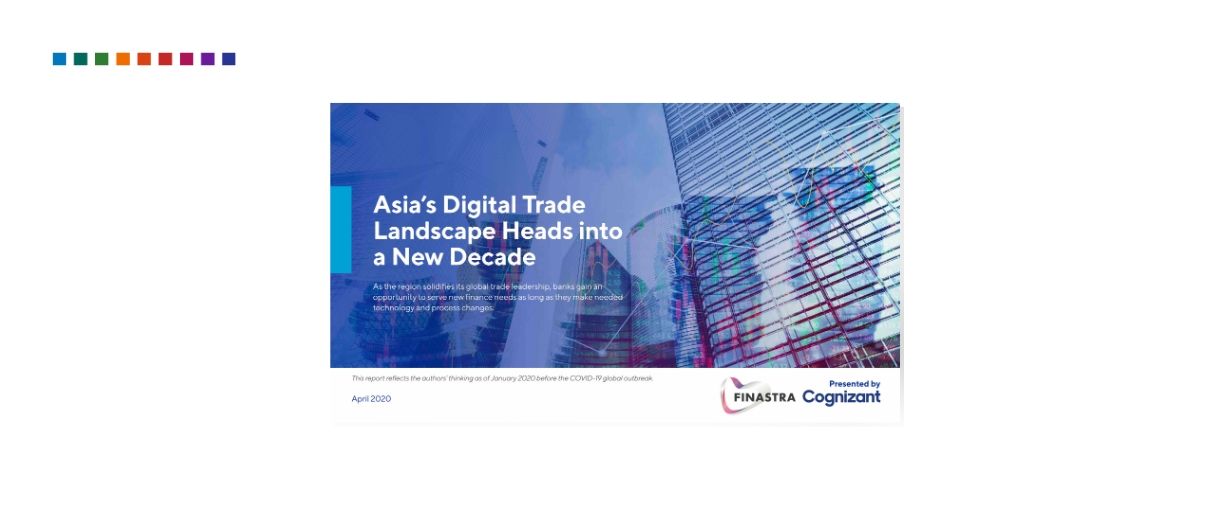As the region solidifies its global trade leadership, banks gain an opportunity to serve new finance needs as long as they make needed technology and process changes.

A boom in Asian trade and a new challenge for banks
By the end of last decade, Asia had further established its position as an integral cog driving the global trade machine – but that’s just the beginning of the story for traditional banks serving businesses in the region. The continent continues to emerge as a leader on the world stage, producing, trading and consuming over two-thirds of the globe’s major commodities. The region is also on track to top 50% of global GDP and drive 40% of the world’s consumption by 2040.
Geopolitical and economic developments in the second half of 2019 further shifted focus from the Western seats of power to Asia. The majority of Asian countries have significantly reduced tariffs for trade among themselves, while signing a free trade agreement with India and China to capitalize on U.S.-China trade tensions. In addition, Japan, Australia, Canada and eight other countries ratified the Comprehensive and Progressive Agreement for Trans-Pacific Partnership, from which the U.S. withdrew.
Oxford Economics has estimated the potential impact of the U.S.-China trade war to be US$360 billion. Even with Asian trade flows expected to grow 4% to 9% a year from 2017 to 2026, vs. just 2% to 5% expected growth in U.S.-based trade corridors, according to the International Chamber of Commerce (ICC), the region is far from reaching its full potential.
 Australia
Australia Hong Kong
Hong Kong Japan
Japan Singapore
Singapore United Arab Emirates
United Arab Emirates United States
United States France
France Germany
Germany Ireland
Ireland Netherlands
Netherlands United Kingdom
United Kingdom






Comments are closed.